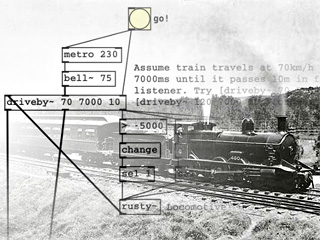Course Description
In this course, we will rebuild the everyday sounds of nature, machines, and animals from scratch and encapsulate them in dynamic sound objects which can be embedded into computer games, animations, movies, virtual environments, sound installations, and theatre productions. You will learn how to analyze and model …
In this course, we will rebuild the everyday sounds of nature, machines, and animals from scratch and encapsulate them in dynamic sound objects which can be embedded into computer games, animations, movies, virtual environments, sound installations, and theatre productions. You will learn how to analyze and model sounds and resynthesize them with the open-source graphical programming environment Pure Data (Pd). Our work will be guided by Andy Farnell’s book Designing Sound (MIT Press, 2010). No previous programming experience is required.
Course Info
Learning Resource Types
grading
Exams with Solutions
notes
Lecture Notes
group_work
Projects with Examples
Instructor Insights
equalizer
Demonstration Audio

One of the sound design exercises in this course challenges students to synthesize a steam train drive-by, with each group working on a different sound related to that problem. (Steam train photo is in the public domain, from Flickr Commons.)










